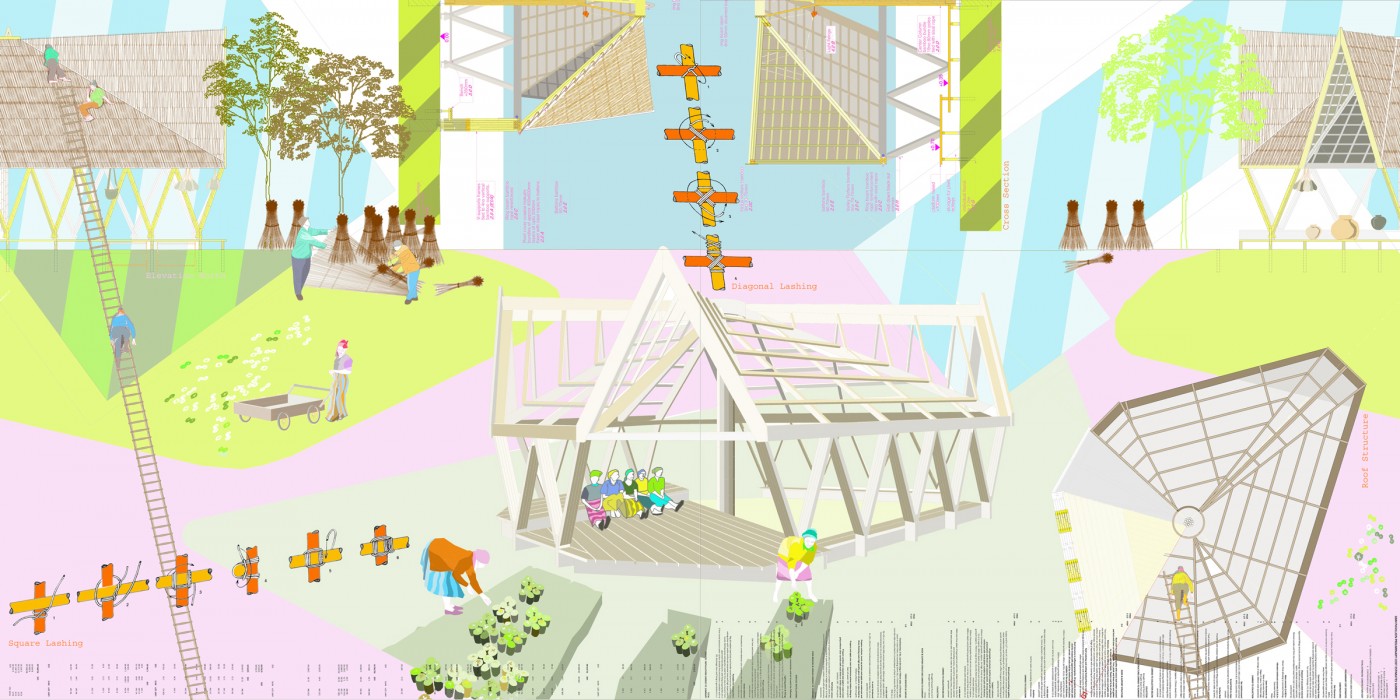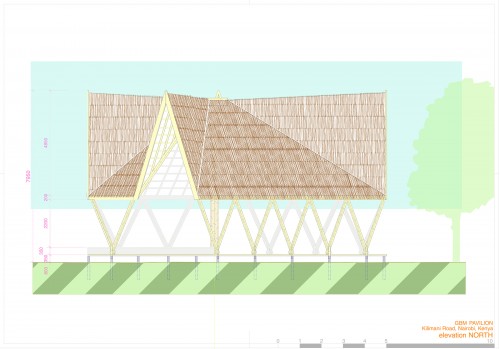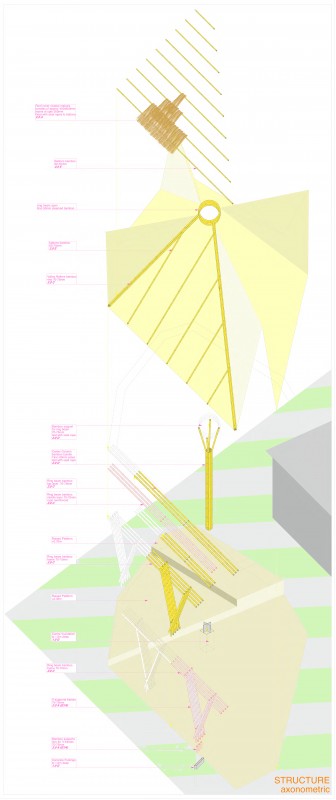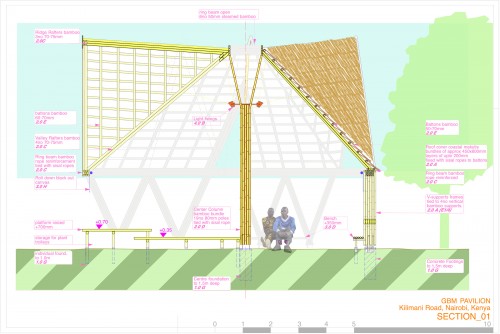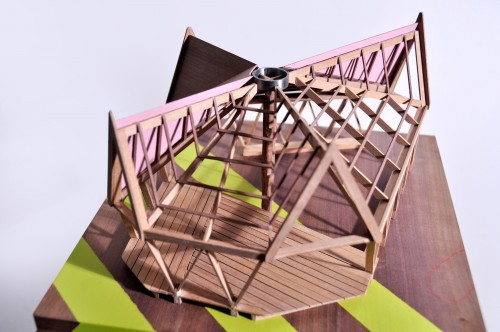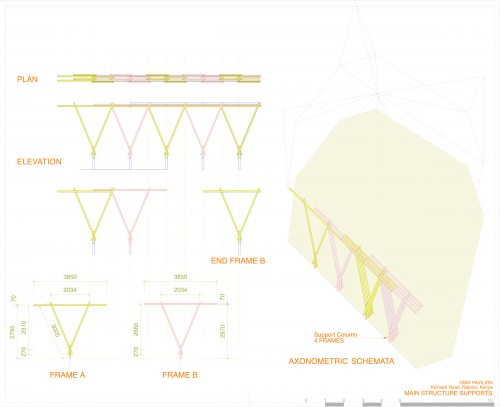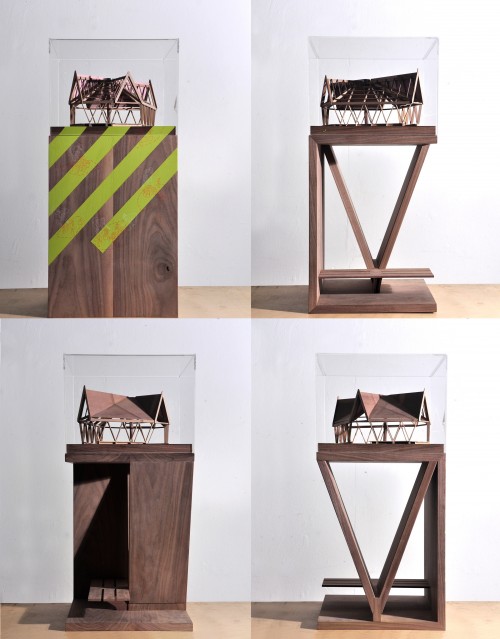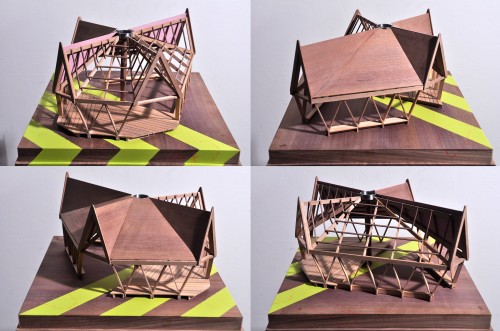This project looks at strategic design principles for the making of temporary shelters in developing countries. It is a response to a call to design a teaching and learning pavilion for the Green Belt Movement, a non-governmental organization (NGO) based in Nairobi that fights deforestation. The brief was to research and design a ‘learning and meeting space’ for their headquarters. Despite the specificity of the brief, the research focused on the broader issues and problems of designing a project with limited funding, materials and skill base in Kenya. The aim was to devise an economic, sustainable and simple structural method that could be adapted elsewhere according to need.
The Green Belt Movement (GBM, http://www.greenbeltmovement.org) is an NGO working on several reforestation projects throughout Kenya. The organisation requires a ‘learning and meeting space’ for their headquarters, currently based in a converted three-bedroom house with a large garden in a residential neighbourhood of Nairobi. The new pavilion will be located in the garden and offer relief for the cramped conditions of the house. The pavilion should also provide ‘inspiring space’ for meetings and the frequent visits of film teams, local and international officials.
Humanitarian aid initiatives such as the GBM often lack adequate, functional meeting spaces that allow for knowledge transfer and community engagement. This project aims to propose ways of empowering the community through architecture and, in this way, create a design that advances the GBM’s environmental work.
Adaptability and the use of renewable resources lay at the heart of the project right from the start. The pavilion will be initially installed in the Kilimani Lane garden, to be dismantled and reinstalled at a new site when GBM needs a larger base to cope with increased activities.
The project went through three design and research phases to test different building materials in order to determine the most economic and sustainable solution: the first phase researched local gumpole wood; the second, cheaper softwood; and the third and final version, locally sourced bamboo.
Project Team: Patrick Weber, Emma Kitley, Fergus Knox.
The project was initiated by John McAslan & Partners, London and supported by Planning Systems Nairobi and the Palm Centre Kew, London.


